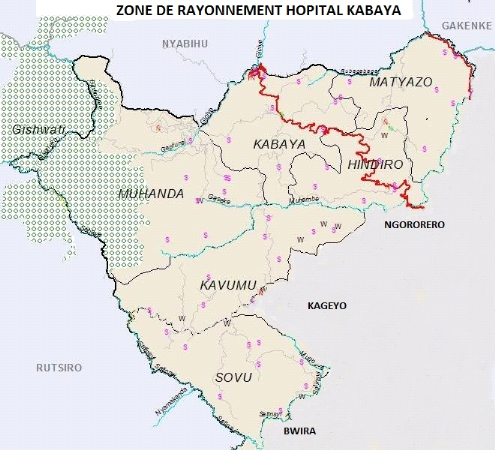CHAPTER 4. PRESENTATION AND ANALYSIS OFFINDINGS
4.0
Introduction
This chapter presents, analyzes and interprets data gathered
from primary and secondary sources. The chapter is divided into sections. In
order to supplement the findings from the collected copies of the
questionnaire, qualitative and quantitative approaches were used. Twenty copies
of the questionnaire were distributed, and all of them were filled and
collected, indicating that none were missing. In order to make the work more
scientific with statistical evidences, the Statistical Package for Social
Sciences (SPSS) was used in data analysis. Findings were presented in frequency
order, followed by relationship; the researcher used correlation and regression
tests to analyze the relationship between independent and dependent
variables.
4.1
Background of Kabaya District Hospital
In 1939, Indian and Belgian traders set up a Dispensary
located near the trading center of Kabaya to be able to treat injured of
Gishwati miners and the surrounding population. The set up Dispensary became a
health center in the1970.
In 1982 Kabaya District Hospital was constructed with the
support of Luxembourg cooperation.Kabaya District Hospital is a public Hospital
located in Western Province; Ngororero District. Kabaya District Hospital is
located on the main road Muhanga-Ngororero-Kabaya-Mukamira, At 69 Km from
Muhanga and 27 Km to Mukamira. Kabaya District Hospital has currently a
capacity of 144 beds (January,2019).It serves six health centers (Kabaya HC,
Gashonyi HC, Muramba HC, Ramba HC, Mabuye HC and Rubaya HC). Serves 192113
inhabitants (2019) distributed in 6 sectors (Kabaya, Muhanda, Kavumu, Sovu,
Matyazo, and Hindiro).
4.1.1
Kabaya District Hospital Vision, Mission, Values and Moto
Vision: To promote health by offering high quality services
valued by the population served and comply with national and international
standards.
Mission: To provide high quality services in order to
contribute to the welfare of the population, to the socio-economic development
and to the health of the population.
Values: High quality and safe care Provision of up-to-date
medical services. Hygiene, welfare and comfort for all clients.
Motto: Care is the first cure.
(Manuel procedures, 2019)

Manuel procedures, 2019
4.2. Profile of respondents
In social sciences research, respondents' personal
characteristics play a very important role in expressing and responding to the
problem. With this in mind, a set of personal characteristics, namely gender,
age, education background, and working experience, were the profile of
respondents considered during this research. This was done to provide a
foundation for drawing conclusions about the role of e-procurement in the
effectiveness of Rwandan Hospitals.
4.2.1 Gender of respondents
Gender is defined as the state of being male or female, which
is usually used to refer to social and cultural differences rather than
biological ones, but in this study, gender refers to both social and biological
aspects.
Table 4.1: Gender of respondents
|
Gender of respondents
|
Number of respondents
|
Percent
|
|
Valid
|
Male
|
19
|
79.2
|
|
Female
|
5
|
20.8
|
|
Total
|
24
|
100.0
|
Source: Field data, August 2021
As shown by table 4.1, most of the respondents were male
represented at 79.2%, this shows that men practice the business by using
e-procurement more than women in Rwanda.
| 


